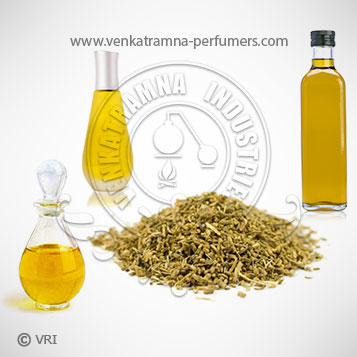
| Botanical Name | Valeriana Officinalis |
| Common Name | Valirian, Valeriana Officinalis. |
| Country of Origin | India, France, Hungary, Japan |
| Solubility | Insoluble in water, soluble in alcohol and oils |
| Specific Gravity | 0.940 @ 72°F |
| Optical Rotation | -0.13 |
| Refrective Index | 1.435 @ 72°F |
| PlantPart | Root |
| Bland With | Patchouli, Pine, Lavender, Cedarwood, Mandarin and Rosemary. |
| CAS No | 8008-88-6 |
| Flash Point | 111 °C |
| Extraction Method | Solvent extracted |
The Valerian Root Oil is highly prized for its healing properties. The major healing elements found in the valerian root are valepotrits, valeranic acid, valeranone and valereal. These are all highly volatile oils that are found only in valerian.
Pliny aptly named this herb 'Phu', a most descriptive term to summarize its scent. However, only the dried root smells 'phu', and even here, it must be said, tastes differ: cats, rats and even trout apparently find it irresistible and go crazy over it. The Pied Piper probably didn't so much lure the rats and mice of Hamlin with his music, but with a secret stash of Valerian that he had hidden in his pockets. According to old angler's yarn, treating bait with Valerian will ensure a good catch. Valerian is related to Spikenard, the legendary anointing oil. The ancients called it 'all-heal' and thought highly of its powers as a healing and magical herb. It also figured as a key ingredient of Theriak, the miracle panacea of the Middle Ages, which was used for a wide range of ills. The name 'Valerian' is derived by association with the Germanic smith-god Wieland (aka 'Wayland smithy'), who used this herb for all kinds of healing and magic practices. Folklore has it that if one puts a little Valerian under the tongue and kisses the girl of one's dreams, she will surely be smitten'As a powerful magical herb, Valerian was of course also capable of warding off witches and to undo their evil works.
Color : Yellowish greenish liquid @22 °C with Heady, unpleasant odor,
Aroma : Valerian Root Essential Oil has an earthy, slightly sweet scent characteristic of an oil derived from a root.
Actinidine, borneol, carotene, calarene, calarenol, bornyl acetate, isoborneol, elemol, jatamols A and B, jatamansic acid, Jatamansone, nardol, nardostachonol, norseychelanone, seychellane, seychellene, spirojatomol, valeranal, valeranone, virolin, angelicin, jatamansin, jatamansinol, oroselol.
The Valerian Root Oil acts as an astringent and emollient. It is a proven digestive, stomachic and laxative. It is highly recommended for flatulence, constipation, jaundice, etc. It is also helpful in combating various skin and hair problems. This oil is widely in demand in the pharmaceutical and cosmetic industry.